Our Mission Statement
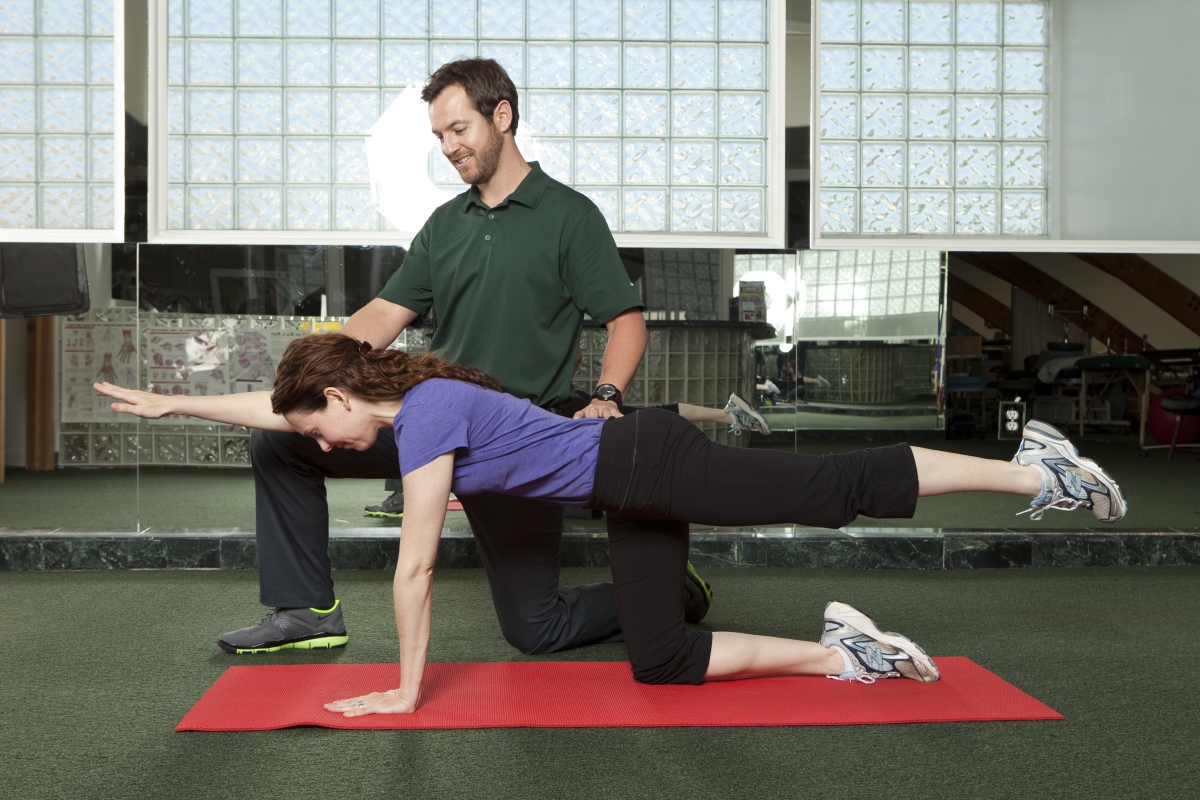
CompletePT is committed to helping patients recover from injury, pain, and physical dysfunction using a combined program of pool and land physical therapy. Our dedicated physical therapists help patients prepare for surgery, prevent surgery, or recover from surgery. We believe that with our guidance, patients can learn to direct their own physical well-being and become independent and proactive in conducting their own life-long exercise regimens.
What to Expect from Physical Therapy

Here, at CompletePT, our highly-skilled physical therapists (PTs) will use their clinical skills and vast knowledge to give you the care and tools you need to help achieve your specific physical goals. We dedicate ourselves to providing you with a fast, lasting recovery from pain and injury by implementing up-to-date therapeutic techniques. Our goal is to guide and educate you regarding proper movement mechanics and the specific corrective exercises that will give you the highest potential of returning to a pain-free lifestyle.
Having an active role and taking responsibility for your own health and well-being is a vital element during the rehabilitation process. We strongly emphasize that you complete the home exercises and stretches given to you by your therapist, since regular exercise is essential for restoring pain-free movement.

As with any exercise program, you must perform it with discipline and consistency in order to gain fitness and strength. Do not become alarmed if you become sore after a session – that is part of the training process. In order to make muscles, tendons, and joints stronger and more resilient, we must give you enough work to create a certain amount of soreness from which you will quickly recover.
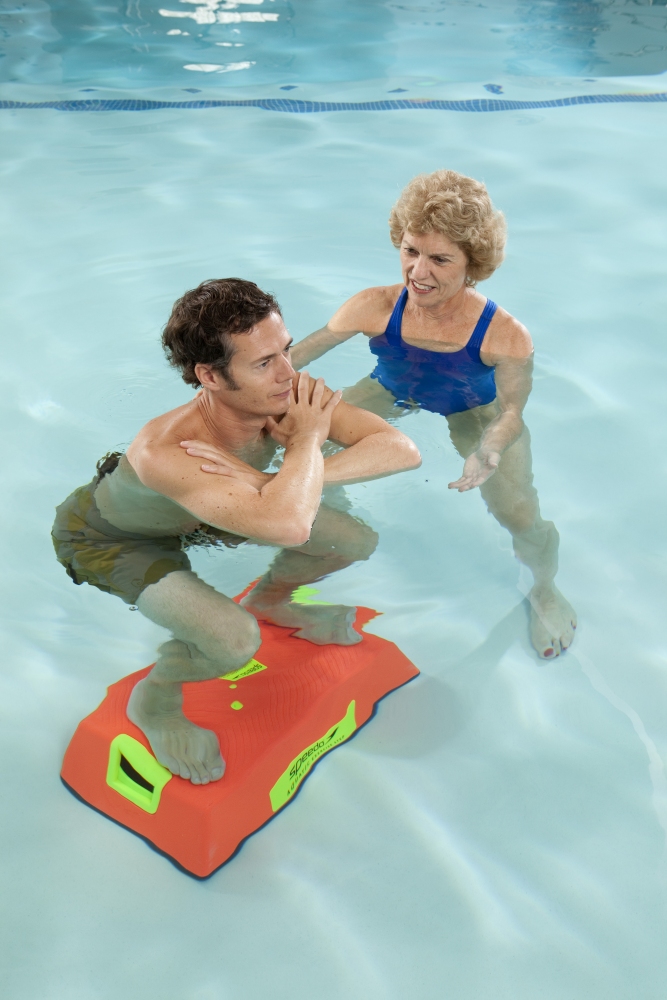
After your body adapts to that work, then we can increase the workload again. Your program can progress more quickly when you do your exercises and stretches at home between therapy sessions. Your therapist will instruct you on the proper use of ice and heat at home to complement your exercises and to further accelerate the healing process.
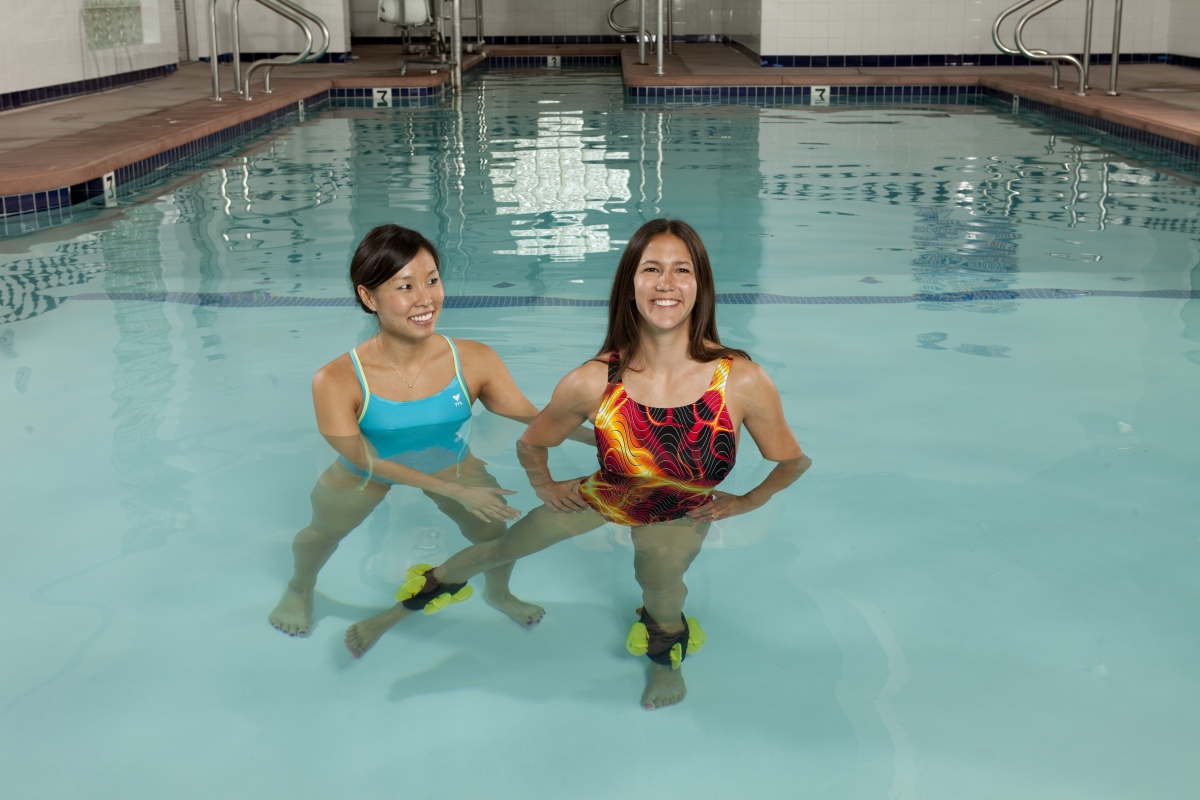
You will begin with your Initial Evaluation, at which time a physical therapist will assess your condition and determine which of our various therapy techniques will best resolve your case.
Progress Reports and Continuation of Care
You will have periodic Progress Reports separate from your therapy sessions which will be scheduled by the office staff. Progress Reports are done to document your progress in therapy and report the findings to your doctor.
During Progress Reports, the Physical Therapist will use specific measurements, functional abilities, and reports from you to determine if continued therapy is warranted. Continuation of care is not based upon remaining visits on your prescription, the number of visits your insurance company has authorized to pay for or the need for physical fitness maintenance. Continuation of therapy is based on the need for skilled therapy for the diagnosis that is being treated.
Discharge and Maintenance
A patient may be discharged when the Physical Therapist determines that the patient has reached a plateau with therapy and is no longer making significant gains both functionally and objectively to justify continuation at that time. Maintenance of the status quo is not considered skilled therapy, and is therefore not covered by insurance. A home exercise program for land and/or pool will be given to you at the time of discharge, that is appropriate for your condition, and the continuation of your program on your own. It is expected that you keep up with your home exercise pool or land program to maintain the gains you achieved. Pool exercise classes are available here and you can check with your physical therapist to direct you in choosing the best class for you. Keeping up with your exercise will allow you to retain the maximum benefits from your physical therapy experience.
Returning for a New Round of Therapy
If you have kept up with your individualized home exercise program for three months yet feel you have regressed, or that you could now reach for higher goals, please return to your doctor to get a new prescription. Then contact us to return for an evaluation for a new round of physical therapy. We will verify your insurance coverage as usual. At the time of the evaluation the Physical Therapist will determine the continuation of care.
The Physical Therapy Techniques We Use
Pool Therapy:
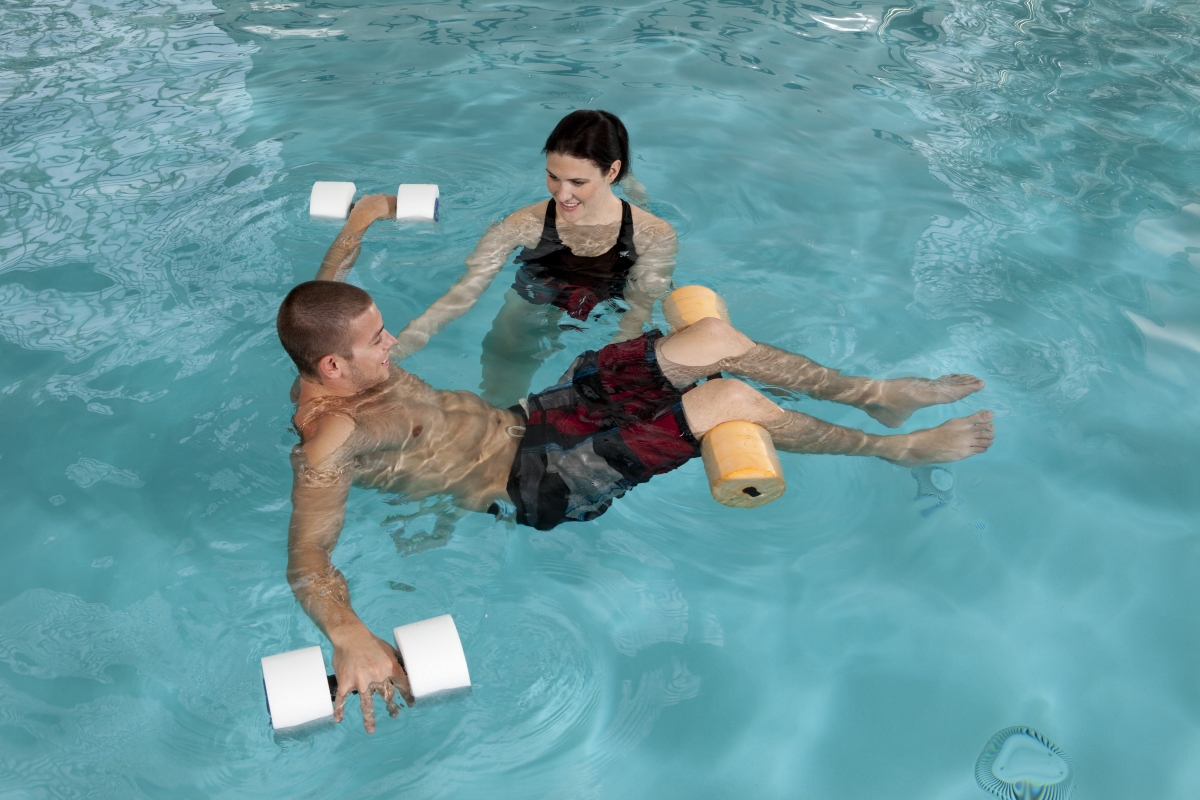
The centerpiece of CompletePT, our dedicated therapy pool has equal parts deep and shallow water for non-weightbearing and weightbearing exercises that are appropriate for all levels of patients. The water is 92 degrees, a temperature that you will find comfortable from the moment you enter it. The warmth and buoyancy of the water help decrease your muscle stiffness, spasms, and pain. Since movement is easier in water than on land against gravity, you will often start in the pool and as you gain strength transition to the land therapy techniques listed below.
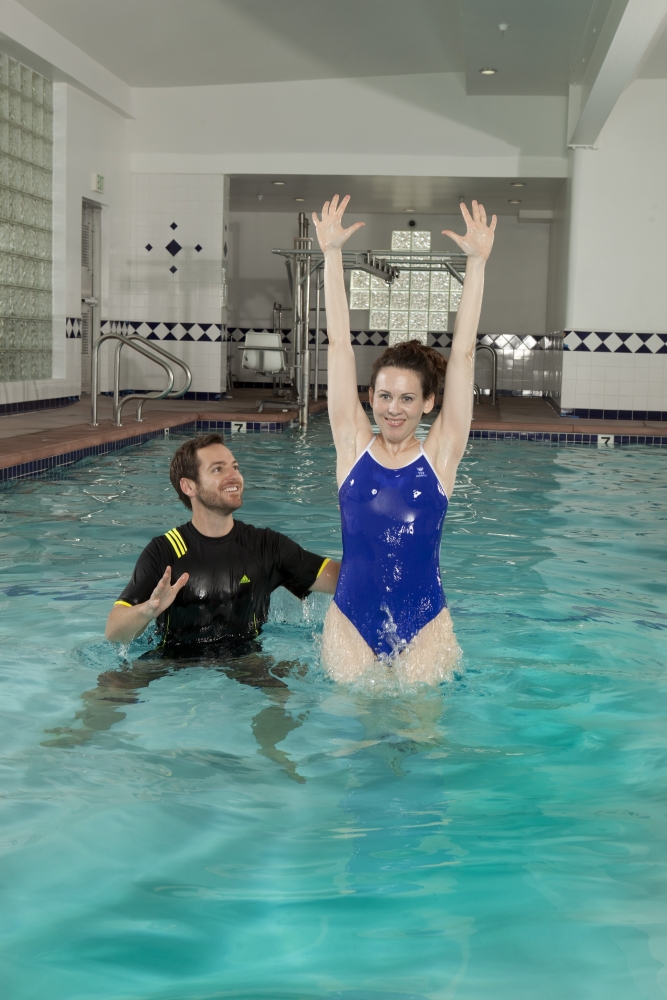
Pool therapy is excellent for a wide variety of people with different medical conditions. Low-level patients can move slowly and comfortably in water while high-level patients can do intensive training that allows injuries to heal without trauma to the weight-bearing joints.
Your total body fitness program will begin at an appropriate level for your condition; then you will progress in speed as well as add resistance equipment to some exercises. Our therapists are in the pool right beside you as you walk, run, bend, jump, and stretch – whichever exercises your therapist decides are appropriate for your most effective recovery.
Manual Techniques:
Tight muscles, stiff ligaments, and problems inside the joints can cause decreased movement. If pain is associated with this decreased movement, loosening the structure that causes the restriction can often relieve the pain. To help you regain normal movement, our therapists manually perform joint mobilizations and tissue mobilizations on your affected areas. There are many different mobilization techniques, some that help decrease pain and others that help increase the movement range of the joint or tissue.

For instance, if you have a knee problem, the therapist could mobilize the knee joint as well as the muscles of the thigh that affect the knee to relieve your pain as well as increase the range of motion of the knee joint. To prevent the pain from returning a short time after the mobilization, other treatments need to be performed, such as stretching and strengthening exercises. These stretches and exercises will be given to you in a home exercise program so that you can prevent pain from recurring. This enables you to become more independent in managing your condition rather than having to depend strictly upon your therapist for relief.
Therapeutic Exercises:
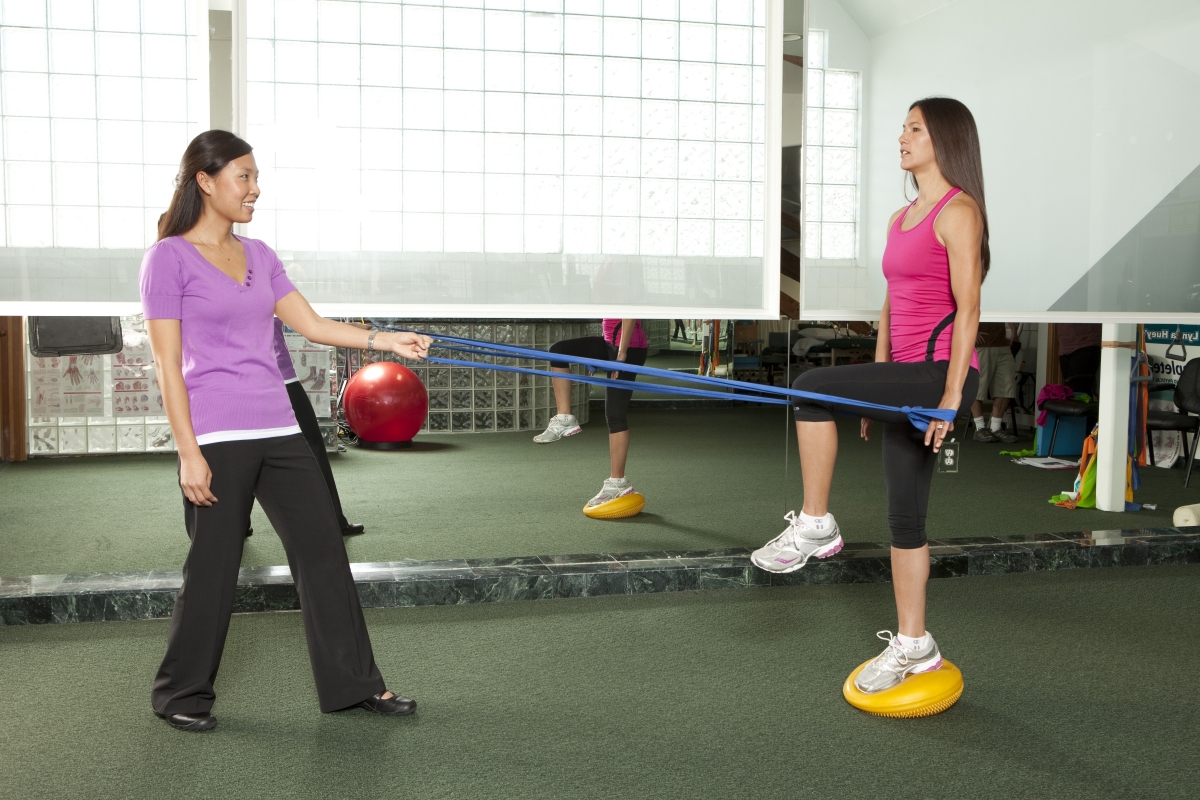
The goal of using exercise as a therapy is to achieve movement and function with less pain or stiffness. To fully use exercise as a therapy, our physical therapists use their knowledge of how exercise affects the muscles, bones, nerves, brain, heart, and lungs. Then they assess your body makeup and how you move. They factor in their knowledge of injuries, diseases, surgical procedures and consider the body’s ability to recover or develop complications. With all of this information, your physical therapist will carefully and accurately design an exercise program for your specific needs.
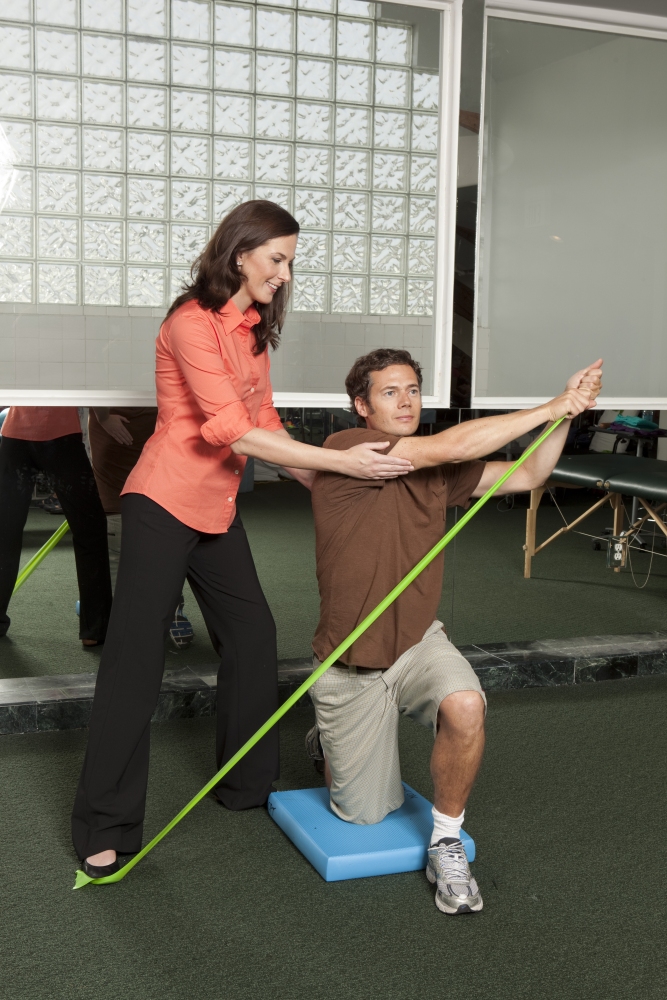
The full amount of motion that can occur at a joint is called the range of motion (ROM). If you are immobile due to an injury or illness, you may lose some of your joints’ normal ROM. If the ROM at a joint is less than normal, there may be certain activities that you cannot perform – such as reaching to a high shelf with a stiff shoulder. In order to maintain normal ROM, joints must be moved through their available range quite often. Our PT teams help prevent loss of ROM by helping you continue to move all of your joints. These are called range of motion exercises.
Many aches and pains can be prevented or treated by having strong muscles. If your muscles are strong, they can protect your joints and keep your posture aligned properly. Proper posture will limit any abnormal strain on your joints, ligaments, muscles, tendons, and bones. If you have had an injury in or around your joints, your PT Team can teach you which strengthening exercises are helpful and which exercises are harmful. They will monitor your exercises when you first start and make sure other problems do not develop. Your PT Team will teach you when to increase or change your exercises. By the time you have completed your program with CompletePT, you will know how to do the exercises independently. If you plan to transition your workouts into a gym, your PT team can prepare you for that by taking you into our gym and teaching you proper techniques.
Modalities:
A modality is the application of a therapeutic agent. We use ice, heat, and machines that are designed to complement manual physical therapy and exercise.
Ultrasound is a machine that uses sound waves to transfer energy into your tissues. It can be used to help repair tissue after injuries such as a sprains, strains, bruises, tendinitis, or open wounds. It can help to decrease pain and muscle spasms, as well as help to break up scar tissue. Another use of ultrasound is called “phonophoresis.” This involves putting anti-inflammatory drugs, in the form of creams, onto the skin and the ultrasound will help the skin absorb it.
TENS is a machine that sends small electrical pulses through your skin. The purpose of TENS is to help relieve pain. Your PT Team may apply TENS to your injury site to help decrease your pain while you perform your exercises or decrease your pain just after you finish your PT routine. If you have chronic pain, you may want to buy or rent a TENS machine so that they can wear it most of the day to decrease your pain.
Heat can be applied in many ways: using a heat pack, using warm water, or using warm wax. The purpose of applying heat is usually to decrease pain. It can help muscles to relax and it can affect your nerves in order to decrease your pain. Heat can also help to bring blood and nutrients to the area and therefore increase healing.
Ice can be applied by using an ice pack or by soaking in cold water. The purpose of applying ice may be to decrease pain or to decrease swelling. If ice is applied to decrease pain, a PT aide will usually apply it after you have finished your PT routine. Ice stops swelling that could occur due to the exercise. Just remember that ice should never be applied for longer than 20 minutes or it can cause other problems like skin damage.

